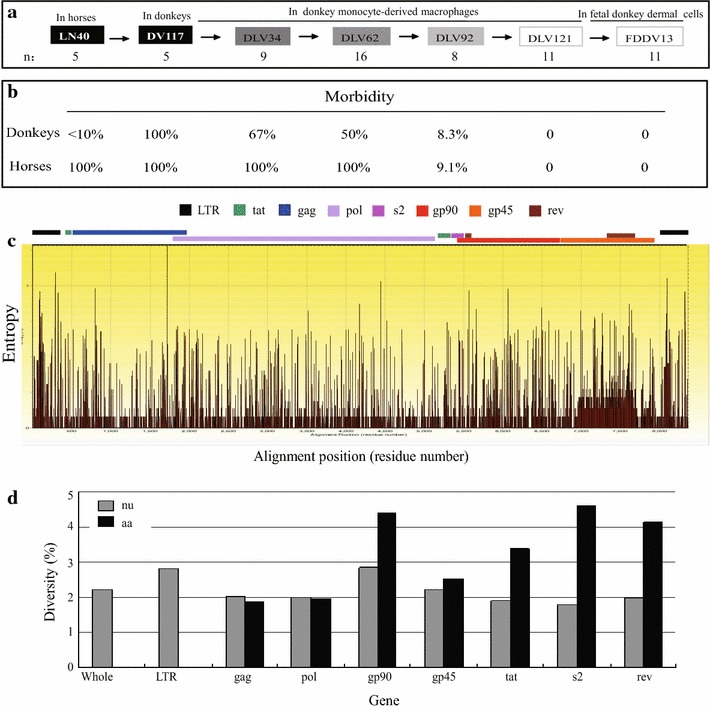Fig. 1.

Genome variants of EIAV strains during vaccine development. a The flowchart of EIAV vaccine development. Four major stages were included the process of vaccine development: the in vivo passages in horses and donkeys and the passages in cultured dMDM and fetal donkey dermal (FDD) cells. The representative strains isolated from each of these stages and the numbers of clones used for the proviral genome analysis are indicated. These viral strains included the virulent strains EIAVLN40 and EIAVDV117, the vaccine strains EIAVDLV121 and EIAVFDDV13 and three strains of EIAVDV117 passaged in dMDM (the 34th passage strain EIAVDLV34, the 62nd passage strain EIAVDLV62 and the 92nd passage strain EIAVDLV92). b The pathogenicity attenuation of EIAV strains during vaccine development. The percentages indicate the morbidity of horses or donkeys that were experimentally infected with the indicated viral strains. c Shannon entropy (SE) plots of EIAV complete genomic sequences depict the mutation frequency at each nucleotide position. Full genomic sequences of 65 clones from seven EIAV strains were isolated from different key stages of vaccine development. Refer to Fig. 1a for detailed information of these viral strains. Larger entropy values indicate higher mutation frequencies. The relative positions of EIAV individual genes are labeled. d The variations in the EIAV genome and individual genes and their encoded proteins among the 65 clones from the seven representative strains. The diversities were calculated by computing the overall mean distances using the p-distance method in MEGA 5 software
